Corfu in a Glass: 6 Wines to Explore...
Explore Corfu’s once-forgotten vineyards and discover...
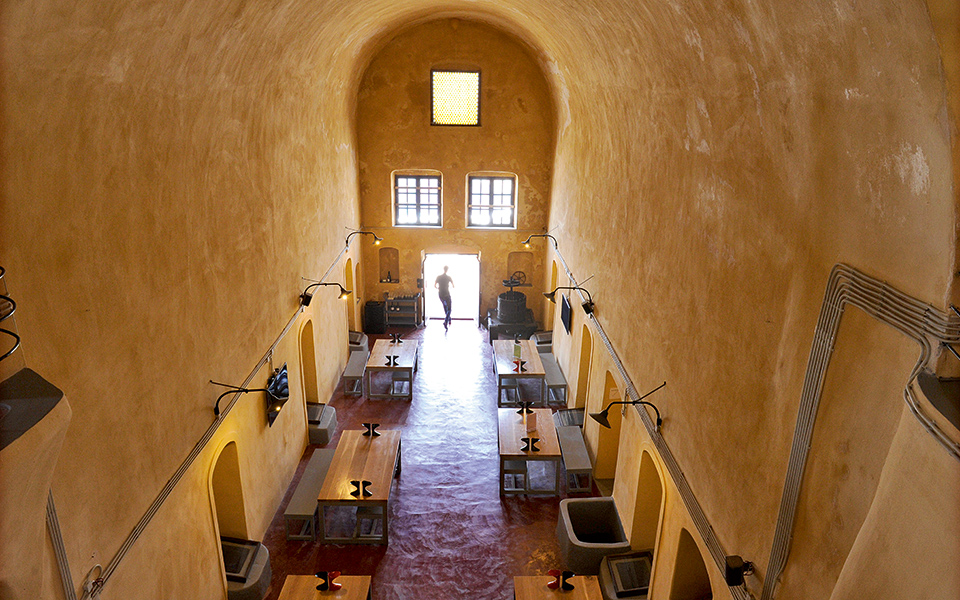
The impressive main hall of the winery, arranged to host tastings and other events. Vat hatches can be seen on either side
© Vangelis Zavos
One careful step at a time, I gingerly make my way down the steep stone staircase that descends into the bowels of the fortress that is Venetsanos winery. I cannot imagine what it must have been like for the heavily laden workers 65 years ago, when Santorini’s first industrial winery had just opened, an ultra-modern facility at a time when electricity was virtually unknown on the islands.
This architectural wonder was built somewhat unconventionally, beginning at the top and progressing to the foundations. The materials were brought up on donkeys and the volcanic ground was dug by hand. Most intriguingly, the ingenious architectural design used gravity to facilitate the movement of goods from the higher to the lower levels, conserving time, effort and energy.
“ The ingenious architectural design of the winery used gravity to facilitate the movement of goods from the higher to the lower levels, conserving time, effort and energy. ”
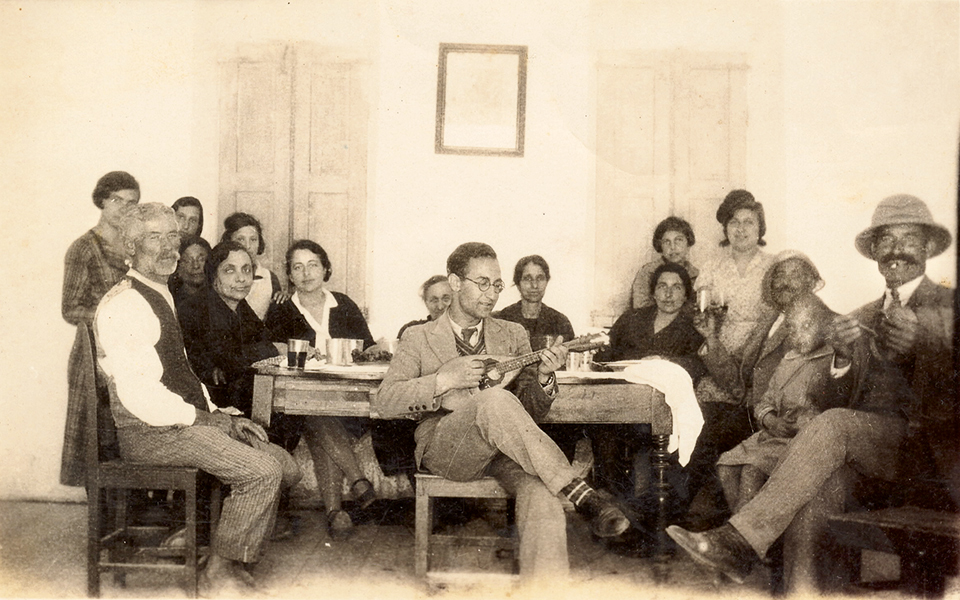
A family celebration at the Venetsanos mansion, with George in the middle playing the mandolin
© Vangelis Zavos
“ Venetsanos drew the complex plans with such accuracy and attention to detail that, according to topographical surveys conducted in 2015, they were inch-perfect. ”
The Venetsanos family was wealthy when it left Santorini for Cairo in the late 19th century and returned even wealthier thanks to business ventures ranging from a furniture factory to wine exports to Russia. The family first built a mansion, then a small traditional winery, which George Venetsanos, born in 1907 and one of the first graduates of the Athens University Department of Chemistry (majoring in oenology) dreamed about expanding and modernizing. A broadly educated man, he had a keen interest in architecture and the mind of an inventor. He drew the complex plans on rice paper with such accuracy and attention to detail that, according to topographical surveys conducted in 2015, they were inch-perfect.
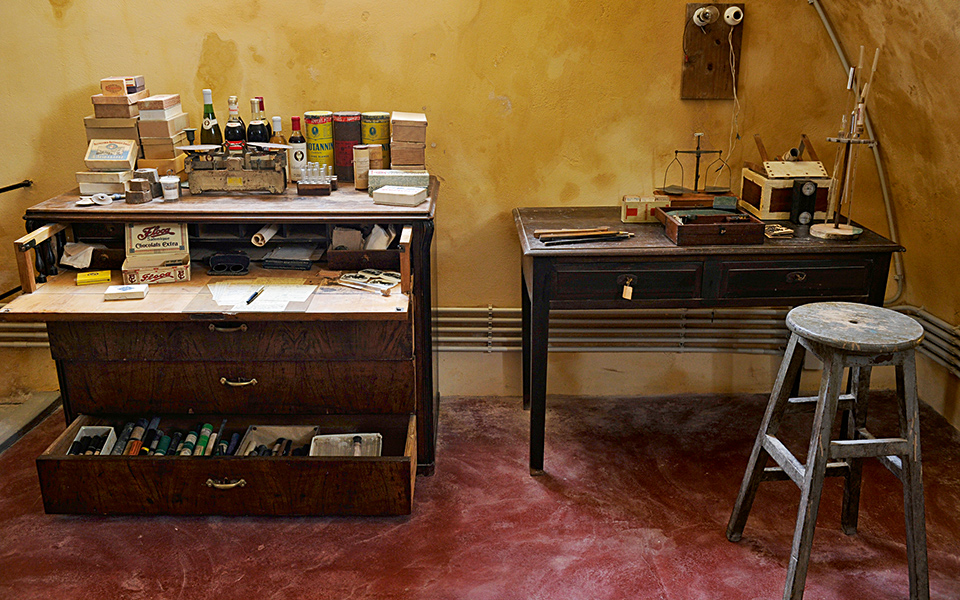
A reproduction of Venetsanos’ laboratory and study, where he would record every detail of every harvest and experiment with different recipes of winemaking
© Vangelis Zavos
Construction began in 1947 and was completed two years later. Donkeys carried up the grapes, and the red varieties – mainly Mandilaria – were poured into the small vat while the island’s three acclaimed white grapes, Assyrtiko, Aidani and Athiri, were placed in the large one. Gravity “pushed” the raw material to the lower levels, for processing. After destemming, the must entered underground tanks and fermented at a constant, low temperature. Three months later, the wine – again with the assistance of gravity – flowed through a pipe down to the port of Athinios and was loaded onto ships. In 1967, George Venetsanos – once again ahead of his time – began to bottle white, rosé and red wine.
Vinification continued at the winery until 1979 and during all that time “Kyr Venetsanos,” as he was respectfully and affectionately called by the locals, kept a detailed account of every harvest, precisely recording quantities, production methods, recipes and lessons learned from his mistakes. This treasure is now being sorted and classified by the winery’s director, oenologist Ioanna Vamvakouri and the once-celebrated winery that fell into disuse for years has reopened thanks to the efforts of Anastasios-Nikolaos Zorzos and his brother Vaggelis, the present owners and heirs of its creator, George Venetsanos (their mother’s uncle).
SANTORINI VENETSANOS 2014
Perfect match with seafood,
grilled vegetables, fish, pasta and fresh or salty cheeses.
NYKTERI VENETSANOS 2014
Ideal with oily fish, pasta with
creamy sauces, ripe yellow cheese
and smoked eggplant dip.
MANDILARIA VENETSANOS 2014
Pairs with pork cooked with prunes,
fatty or spicy cheeses and prosciutto.
A good match with lobster pasta
and fish in red wine sauce.
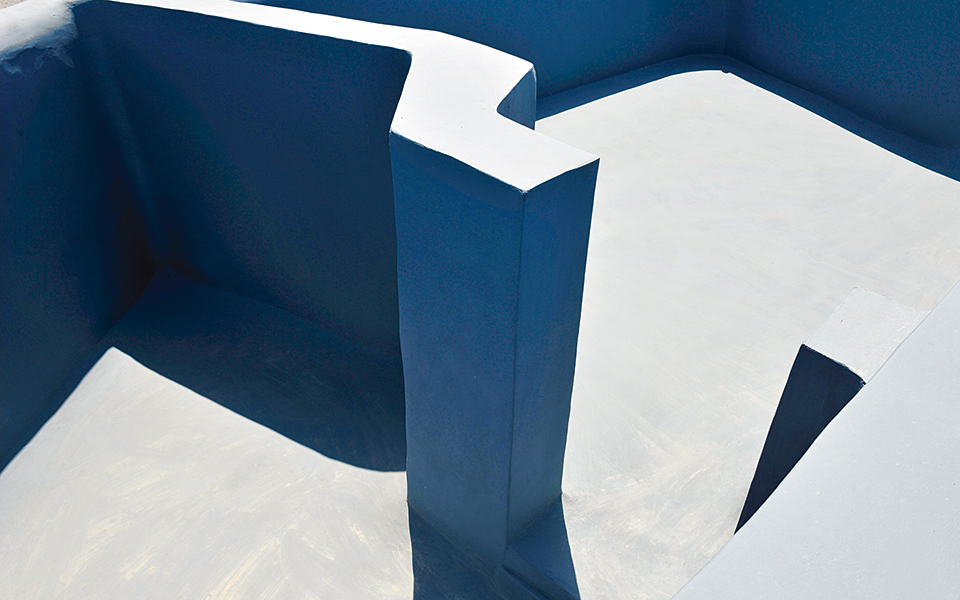
The roof of the winery, one of the two areas where the grapes were brought after being picked
© Vangelis Zavos
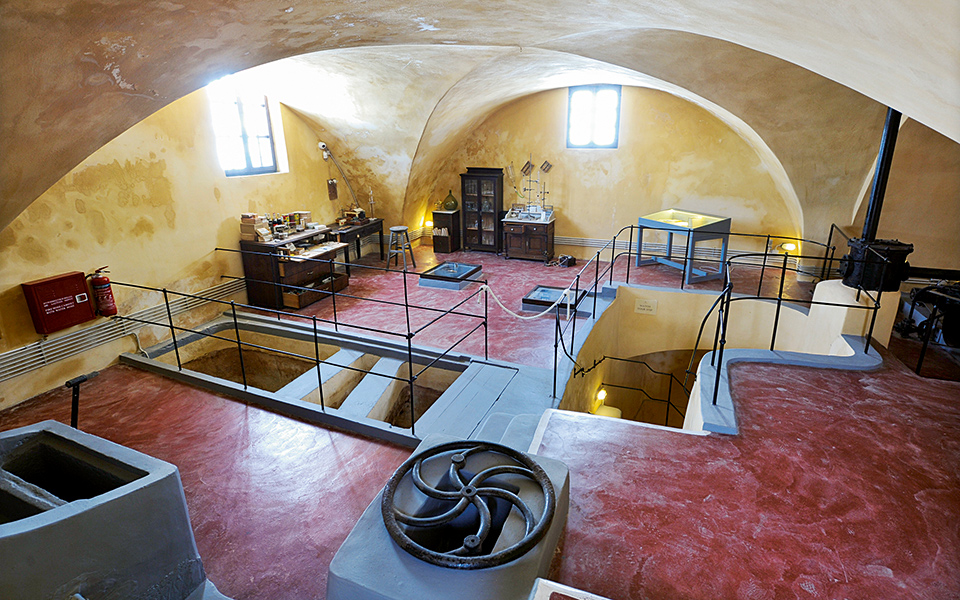
The impressive main hall of the winery, arranged to host tastings and other events. Vat hatches can be seen on either side.
© Vangelis Zavos
On the top level of the Winery there is a charming café serving delicious snacks and refreshments, including wonderfully fragrant homemade lemonade; below, an attractive shop, while the imposing vaulted hall with its 9-meter high ceiling is used for events and tastings. New equipment has been purchased and the wine is again flowing.
The Venetsanos Winery is supplied exclusively from its own vineyards and the wine is made in small steel tanks in order to preserve the distinctive characteristics of each terroir. For the moment, its four labels are available at the winery itself and in carefully selected restaurants on the island, including Assyrtico, Selene, The Bone and 1800. High quality and small scale are the principles underlying the winery’s resumed operation.
VENETSANOS WINERY Megalochori • Tel. (+30) 22860.21.100 • Open daily: 10 a.m. – 9 p.m. • www.venetsanoswinery.com
Explore Corfu’s once-forgotten vineyards and discover...
Discover Greece’s winemaking heritage with tastings,...
From Samos to Crete, we've selected...
The Thessaloniki-born winemaker welcomes us to...